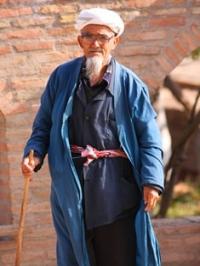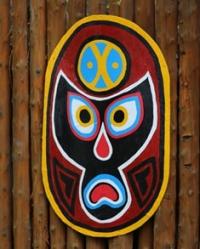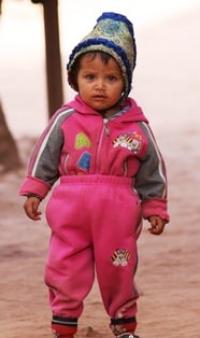You are here
Culture in Boysun village.



Sights Boysun villaje.
“We seldom realize, for example that our most private thoughts and emotions are not actually our own. For we think in terms of languages and images which we did not invent, but which were given to us by our society”
Alan Watts.
History of Boysun.
Since the Neolithic and Bronze Ages, Boysun has been the crossroads uniting Bactria and Sogd. The Akhaemenid, Greek, Kushan, Hepthalite, Samanid, Karakhanid, Ghaznevid and Khorezmshah empires have all left traces. Alexander, Genghis Khan, the Arabs, Amir Temur, Babur, and their armies all passed through here.
Tucked away in a side valley, in the heart of the Gissar mountain range, way beyond Samarkand, south of Shakhrisabsz, Boysun is as yet not a destination on the classic tour through Uzbekistan and quite undiscovered.
The considerable distance from larger towns and cities have been instrumental in helping to preserve the traditional way of life. Once the home of early man, Boysun has developed a unique culture, shaped by the steep mountains, agriculture based on water channel irrigation of the fields, various religious and cult believes and its Tadjik neighbors.
All those above, who have been conquerors, left their own imprint on the customs and traditions. The larger area of Boysun now features on the UNESCO list of oral and intangible heritage and gradually gains interest by adventure travelers who are looking for an interesting detour and a road less traveled.
Even European Tour Operators are starting to offer a few days in Boysun for the adventuresome as there is no tourism infrastructure to speak of and home stays include very rudimentary conditions. It is also possible to arrange for a jeep in Boysun and explore the villages way up along the various narrow valleys that cut deep into the mountains.
High altitude planes, fields of luminous red poppy flowers in spring, the greenest grass and honey colored wheat line the stony track. The rough ride is well worth it. Villages like Dubala, Matai all differ one from another, not only in their architecture but especially in the ethnicity and crafts of the friendly and hospitable villagers who will be delighted to serve delicious home cooking and freshly baked flat bread from the tandir wood burning oven.
Crafts in Boysun.
Whereas gardening and field work is a man's task, women are skilled in spinning wool, dying and weaving of yurt bands and carpets. The local embroidery style depict large round multicolored patterns on a bright background.
The skull caps, tubeteikas, are much in demand by foreign visitors, they are sold in the trading domes of Bukhara and the Medresse shops of Samarkand. Handmade jewelry from black, orange, red, yellow and green beads are all the rage. Usto (master) Musulman Kakhkharov in the Saryosie village has preserved the art of weaving the typical striped brown, orange and grey djanda cloth.
The EU Tacis and UNESCO funded crafts development center aims at reviving these ancient crafts and showcase locally produced crafts for sale.
Customs & traditions in Boysun.
Although Islam is the prevailing religion, many customary rituals which govern life from birth to death have distinct pre-islamic traits. The cradle celebration, circumcision, engagement and marriage, ritual meetings of men and women, and funeral ceremonies are still observed.
There is much historical heritage and native wisdom in these traditions, they keep society intact, set the rules and structure the yearly calendar. Shaman healers and story tellers are an integral part of life, some enjoy widespread fame in the area and provide a reason to travel outside of the village boundaries for the ill or ill-fated.
They still hold their trance-like ceremonies, telling the future and dispelling evil spirits.
Folklore in Boysun.
The spiritual world of Boysun is reflected in its folklore: music and song, games and dances, epic stories and the art of the bakhshi, the singer of tales and legends. The heroic Uzbek epic poem Alpamysh originated here.
In Central Asia, the epics of the famous Boysun-born bakhshi Shoberdi Boltaev are well known. He performs dastans in the throat manner accompanied by the dombra. Religious prayer includes chants that are connected with ancient myths, animism, and are magical to listen to even for the non-initiated.
Traditional ensembles of musical instruments of Boysun play the obligatory karnai and surnai (similar to an alphorn) at weddings. The riding game Kup Kare is also accompanied by a local orchestra of surnai, karnai, nagora, doira and doul. In folklore performances, male dancing is prominent, including the battle dance, the sword dance, rope pulling contest and many others.
The Boysun folklore ensemble was created in 1975. It includes people of various professions and age who love the ancient culture and traditions. They meet and record old songs and customs and dances and collect traditional costumes, and have created an original repertoire.
The ensemble has performed at international festivals of native art in Russia, Poland, Afghanistan, and the UK. Since the independence of Uzbekistan, the Boysun ensemble has become a national symbol of indigenous folk culture.
Boysun Bahori festival.
Since 2002 the "Boysun Bahori" Open Folklore Festival is held yearly in May with the support of UNESCO and the local and Uzbek government.; the best folk ensembles and individual performers from throughout Uzbekistan gather for three days of enthusiastic and most entertaining show blocks and competitions.
Spontaneous "jam" sessions on the festival grounds generate much cheering from the local spectators. Yurt shops set up by the crafts people from the near and far Boysun area give visitors the opportunity to indulge in cheerful bargain for a carpet or a souvenir.
Authority:
http://www.discovery-central-asia.com
Photos
Alexander Petrov.







